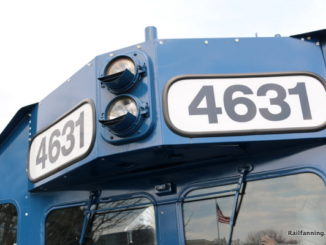
Shortly before Christmas in 1923, the Nashville, Chattanooga & St. Louis Railway’s southbound Dixie Limited passenger train derailed after passing the station in Kennesaw, Georgia.
Engineer J.W. Brown of Decatur, who had been at the throttle since 1902, was killed in the Dec. 22, 1923, derailment after he was scalded to death. A passenger and several railroad employees — Fireman W.H. Young, Brakeman W.H. Young and Porter J.H. Williamson — were injured in the derailment.
The derailment occurred around 7:05 a.m. on a stretch of single-track line. The curved section of the track where the derailment transpired was laid with 90-pound rails 33 feet in length and ballasted with cinders; tie plates were used on the curves, according to an Interstate Commerce Commission report from W.P. Borland, director of the ICC’s Bureau of Safety.
The southbound train, No. 91, had a baggage car, two Pullman sleeping cars, one dining car and two more Pullman sleeping cars. The train was traveling from Chicago to Jacksonville, Florida. A broken rail derailed the train while traveling at an estimated 35-40 miles per hour.
“There was a sudden jolt that almost knocked me off my feet,” passenger Elmer R. Murphey of Chicago said, according to a report in The Atlanta Tri-Weekly Journal.
“There was some confusion. Many passengers rushed for the vestibules and the exits, but as a whole the passengers kept their heads,” added Murphey, who was shaving at the time of the derailment. “Some few were bruised when flung from berths or against seats by that sudden jolt, and one or two narrowly escaped being burned in the clouds of steam that arose from the prostrate engine.”
The engine and several cars were derailed to the right, and the locomotive, No. 550, came to rest on its side on an adjacent passing track.
The investigation revealed that a broken rail, specifically the “high rail of the curve,” caused the derailment. High speed was not to blame for the derailment, according to an ICC report.
“The condition of the engine and speed as factors being eliminated, local track conditions alone remain as the responsible cause for the derailment,” Borland wrote in the ICC report.





